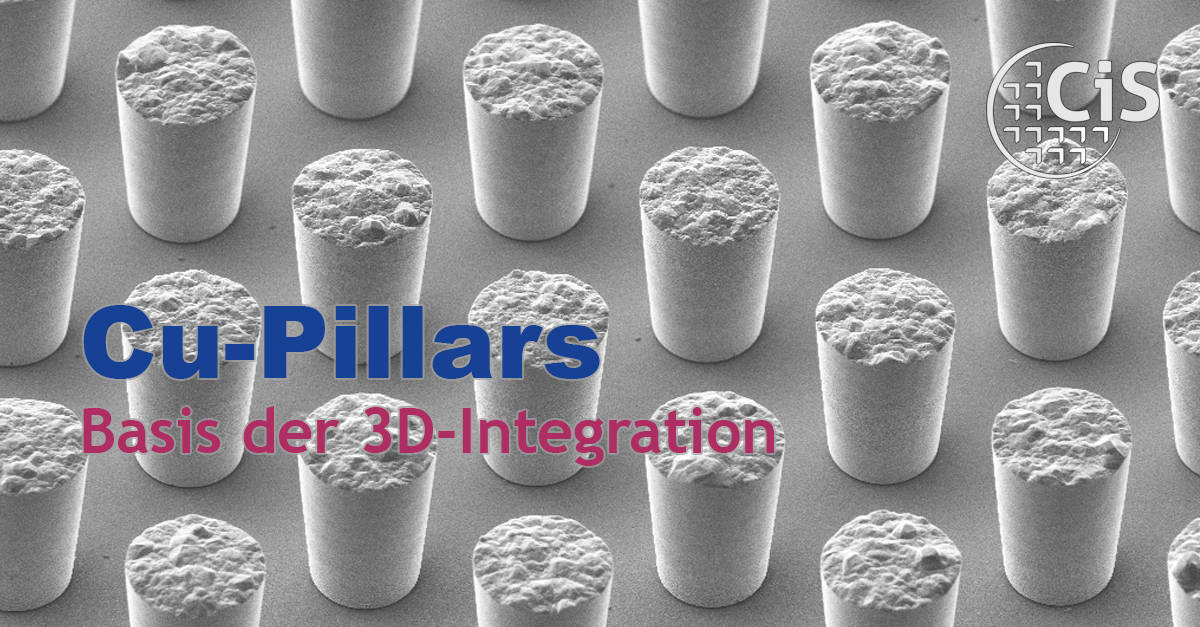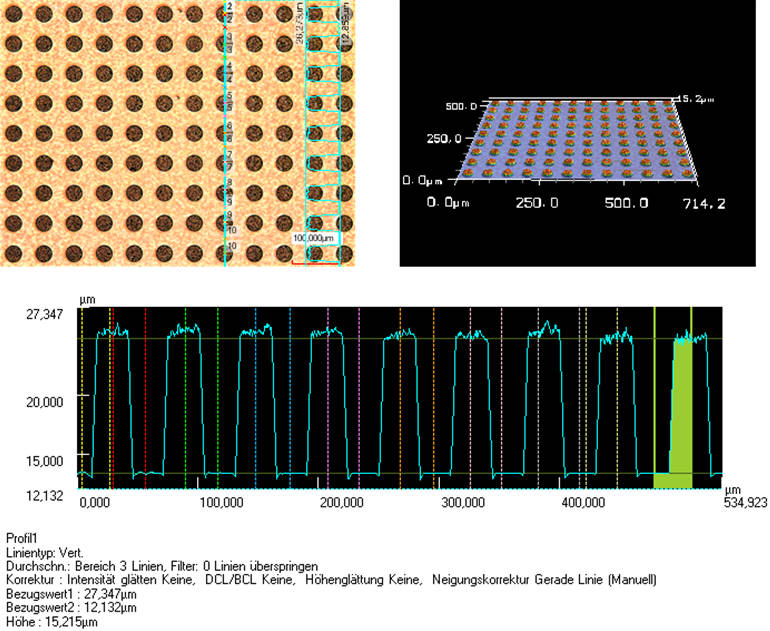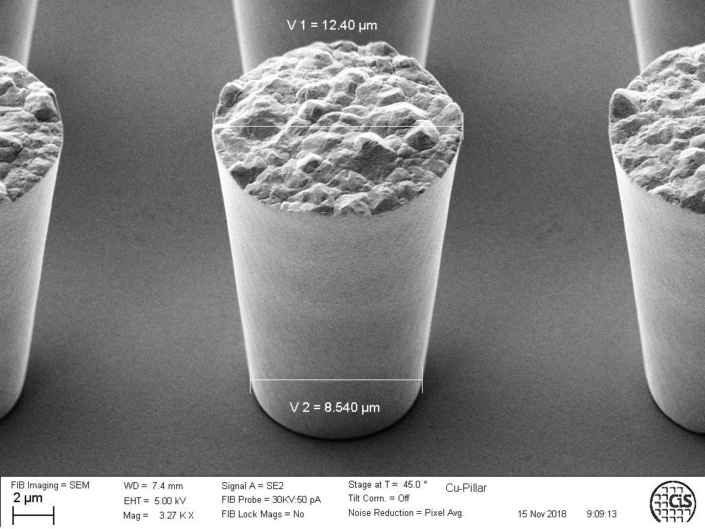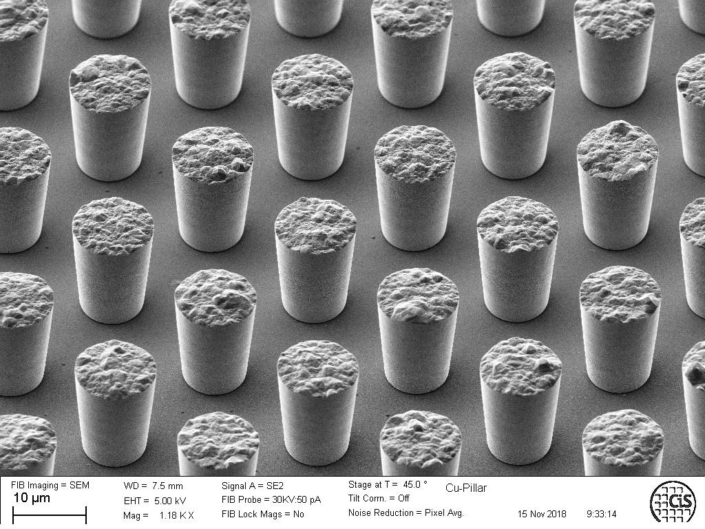In the field of high-energy physics, hybrid pixel detectors have so far been used in which the sensor component is separated from the readout electronics. With the technological optimization of the contact layer system, a 3D integration of the evaluation electronics adapted to the considerably higher requirements is currently being developed. This poses a challenge to the metallization and assembly technologies. As base metallization, copper offers a variety of other metallization possibilities that are necessary for the process optimization of the thermocompression process.
In the project “I2CON – Innovative Chip-to-Chip Interconnections for high-end System Requirements” Cu-Pillars with different surface finishes were produced. The galvanic deposition was optimized to such an extent that a height uniformity of the Cu pillars of less than 5% was achieved on an area of a few square centimeters. This means that more than 25,000 Cu-pillars with a diameter of 30 µm and a pitch of 60 µm have the same height of e.g. 12 µm at the end of processing. This is the basis of the 3D integration of the evaluation electronics on a pixel detector.







